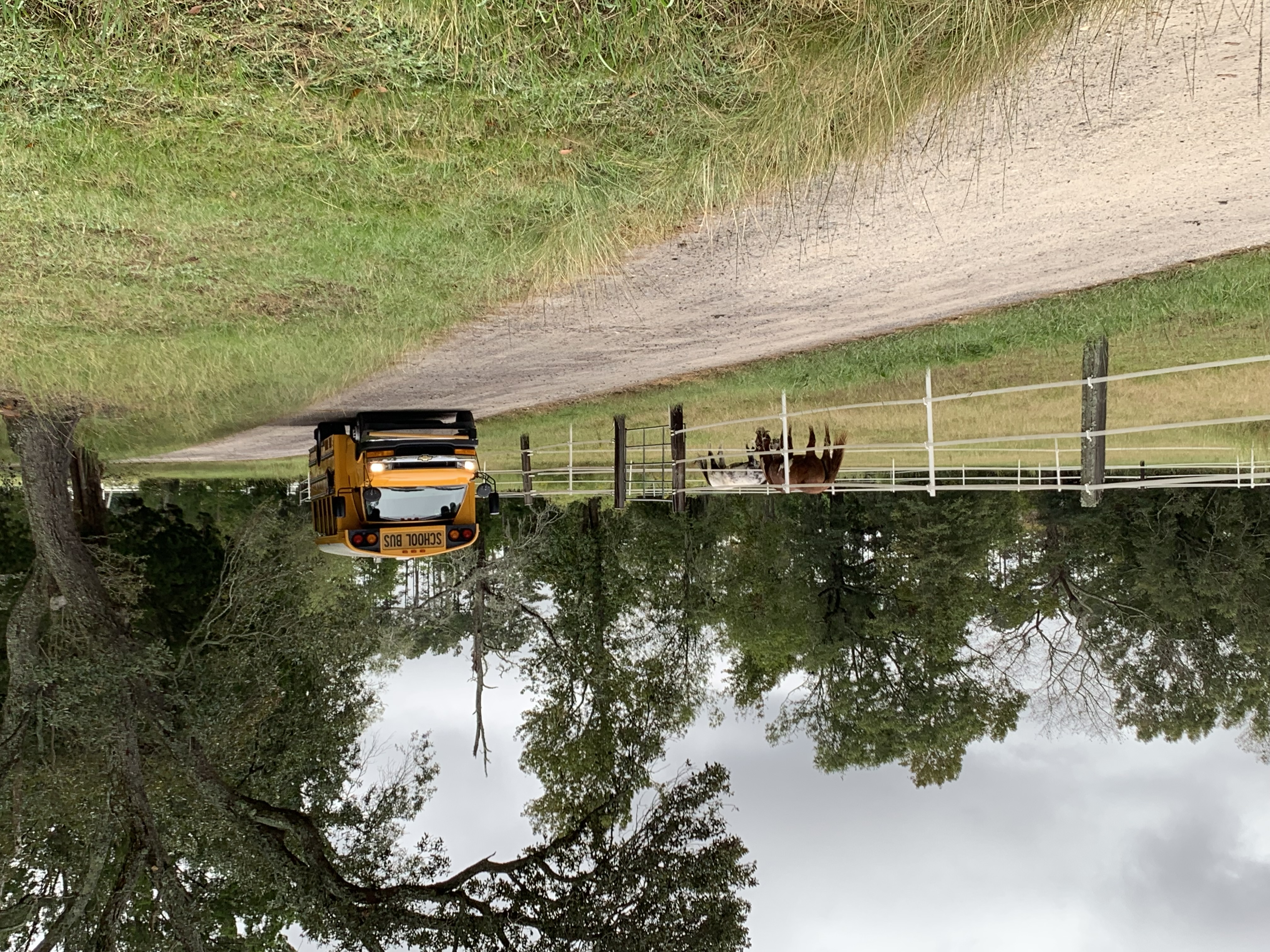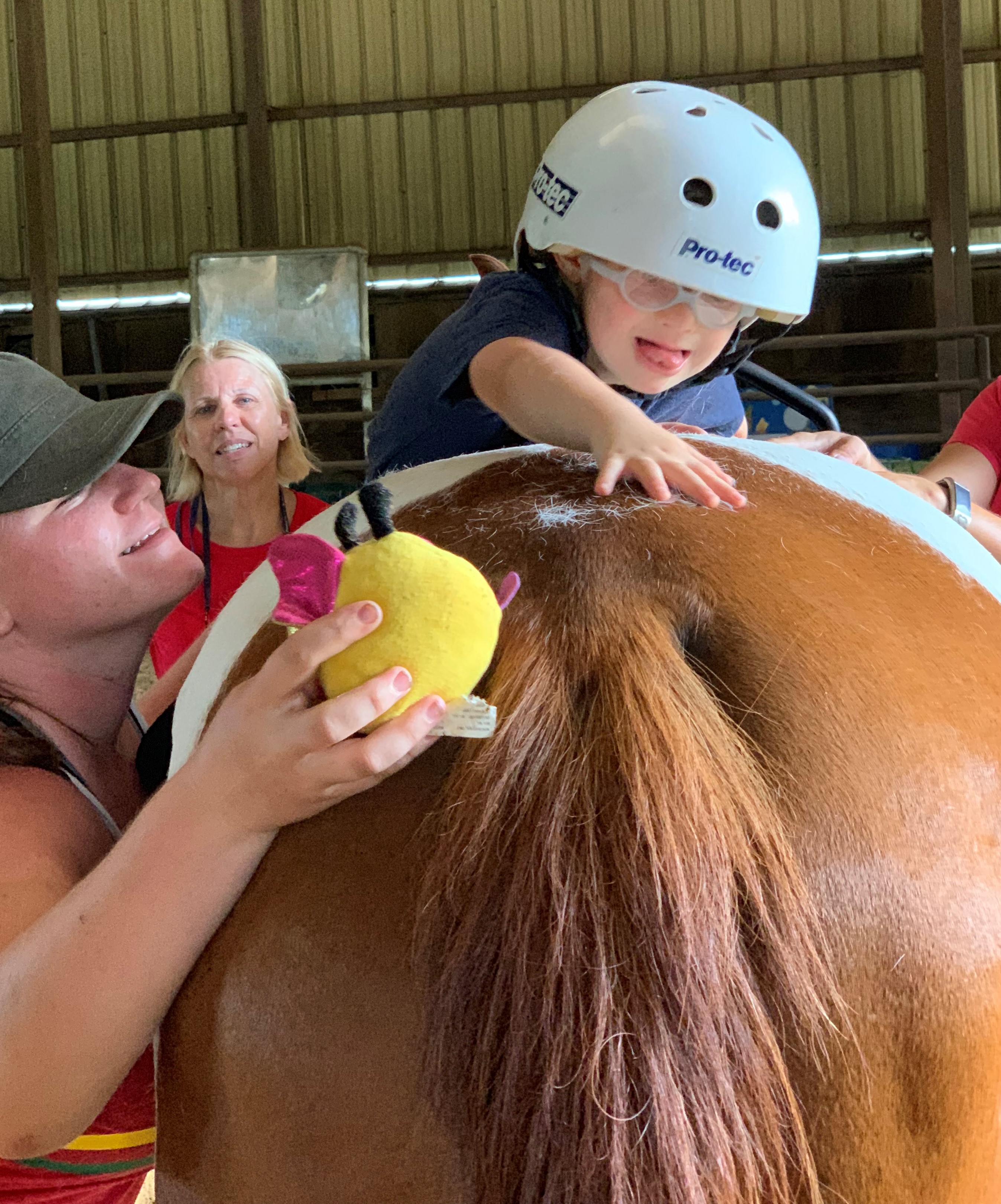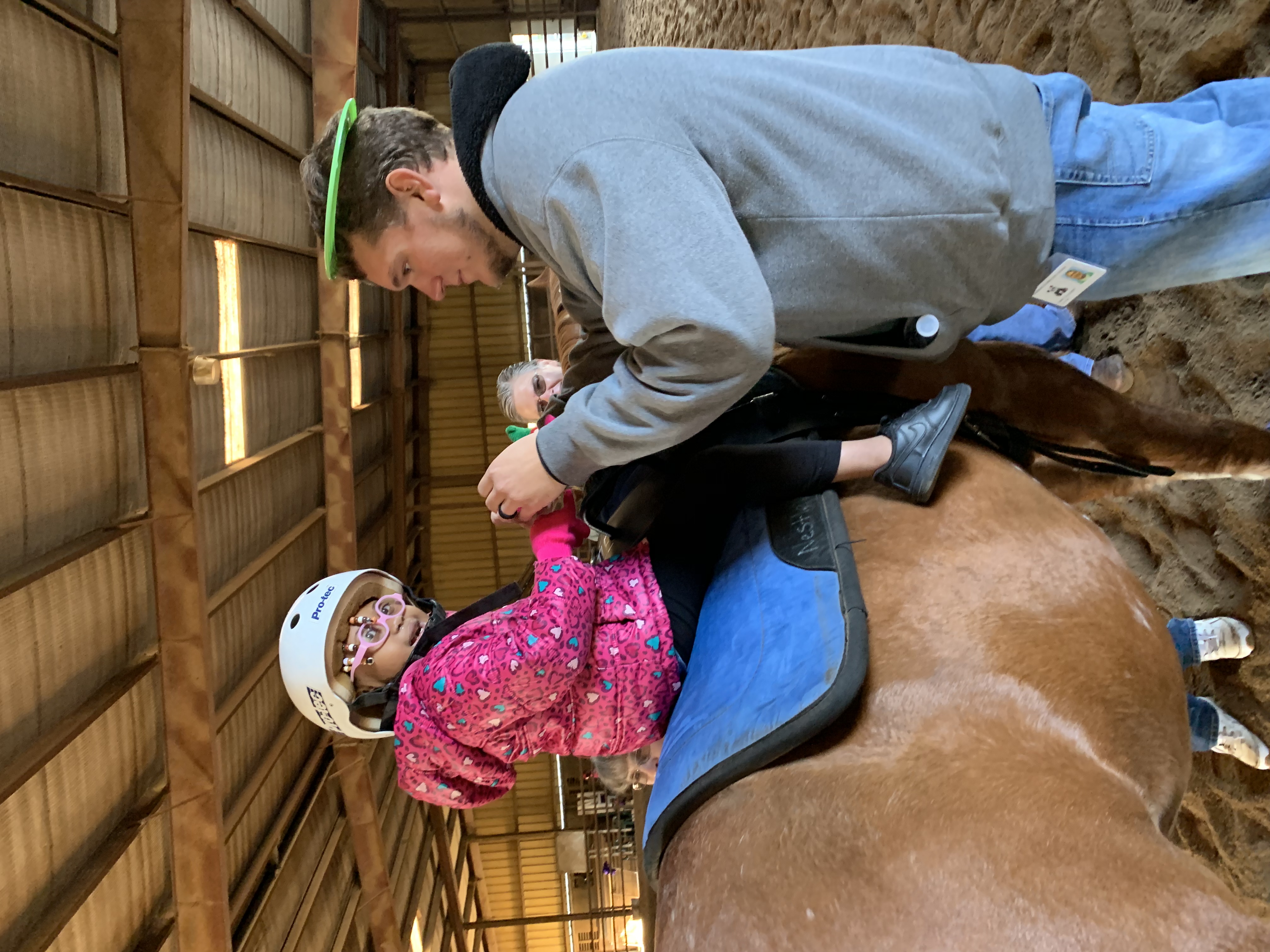The yellow school bus chugs along down the dirt road, followed by puffs of dust that turn a hazy amber in the balmy South Carolina air. Its young occupants press their eager faces into the window glass and mouth hello to the menagerie of animals they see en route to the barn.
Hello, goats! Hello, cows! Hello, birds!
The bus pulls to a stop in front of the weathered wood stables of Georgetown Equestrian Center, home to Hugs for Horses Therapeutic Riding, and the children—ages 3 to 5— clamber out and make their way to the barn.
Waiting to mount up, the children chatter with excitement at the prospect of riding their favorite horse— sometimes Sally, sometimes Nestle, sometimes Liam. For some, the name of their favorite “Hugs” horse is one of the few words they speak.
The bond between the horses and children is obvious. The presence of these patient animals has a way of settling nervous tics and stims. Here, tiny hands pat large necks and small fingers investigate warm nostrils. Noses are a very big deal when you’re only two and a half feet tall.

Mr. Baldwin’s pre-K class is just one of the Georgetown County School District classes for children and teens with disabilities that participates in therapeutic riding lessons at Hugs for Horses. Their disabilities are varied, ranging from physical to cognitive to emotional, but they all benefit from riding.
“We’re using the power of horses to change the lives of those with disabilities,” explains volunteer coordinator Anne Marie Marozas. “It strengthens the core and improves coordination, reflexes, respiration, circulation, and digestion.
“Then there are the psychological benefits: self-confidence, self-control, patience, self-discipline, empathy. There are also great social benefits. The kids love each other, love the horses, love the volunteers.”
[READ MORE: Denver’s urban youth find healing through horses.]
[READ MORE: Rescued horses rescue at-risk youth at Charis Ranch.]
The partnership between the school district and Hugs for Horses ensures that students who need therapeutic riding receive it, regardless of income, transportation availability, and family schedules.
Helping as many children and adults with special needs as possible through the healing power of horses was Rona Jacobs’ dream when she founded Hugs for Horses more than 30 years ago. Today, the program sees more than 100 riders every year.
“We accept new riders as our funds allow. Once in the program, they stay unless there’s a good reason they can’t,” says Marozas. “We have riders who have been here for well over a decade. That’s by design. After all, disabilities don’t just go away.”

The students of Mr. Baldwin’s class are mounted up. Some of the tiny riders are reaching for their horse’s poll, first with their left hand then with their right, encouraged by attentive sidewalkers. These students are working on their body awareness and flexibility.
Other children are playing with rings, placing them on posts (and sometimes a volunteer’s head), working on hand-eye coordination and proprioception.
Some are simply focused on enjoying their rides.
There’s a special type of magic that happens during these lessons, the product of science, psychology, and something intangible credited uniquely to horses. It’s during these lessons that children wave hello for the first time or say their first words.
The classes, which last for nine weeks, often facilitate incredible transformations among the youngsters. “By the time the nine weeks are over, we have a group of kids who are just so excited to ride,” says Marozas. “There’s an amazing change. Sometimes, you can’t even tell they have a disability anymore.”
In an impact letter about the Hugs for Horses program, Baldwin writes: “We have seen great things from these kids when they are on the horses. Our students who have trouble with sensory input processing are calmed to the point that they are able to focus more clearly on a given task. One of our students with low verbal communication skills was able to repeat and imitate word after word while riding the horse. Another student was so calmed/relieved after riding, that for the first time she was able to jump up and down on command. …Without being a doctor or a scientist, it is hard to say for sure what about riding horses is causing these effects, but the results are real… and really exciting!”

After their lesson, Mr. Baldwin’s students help groom the horses. One day, when they’re older and bigger, they’ll enjoy the responsibility of untacking. For now, they happily brush. There are smiles for all. And plenty of hugs.
Hugs for Horses was a 2019 grant recipient from Feed it Forward™, Nutrena’s giving program that provides support for organizations that promote the life-changing bond between animals and people. Learn more at feeditforward.org.


